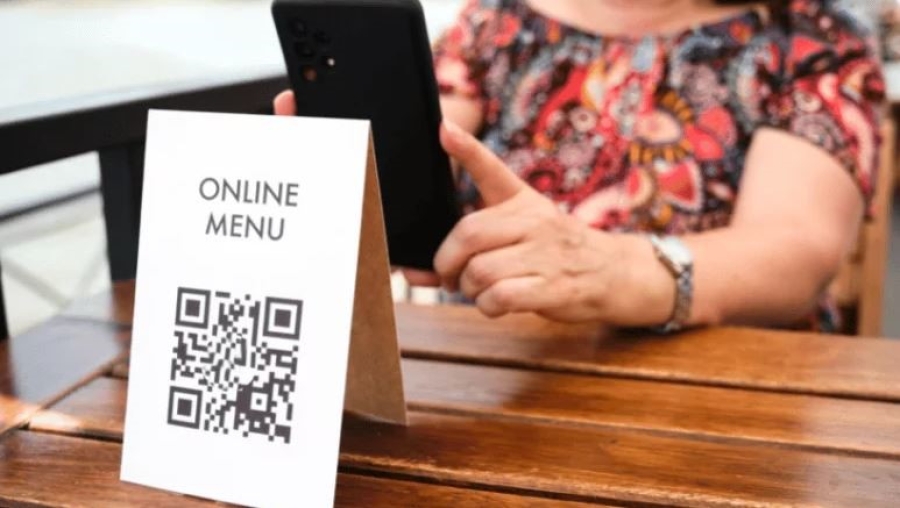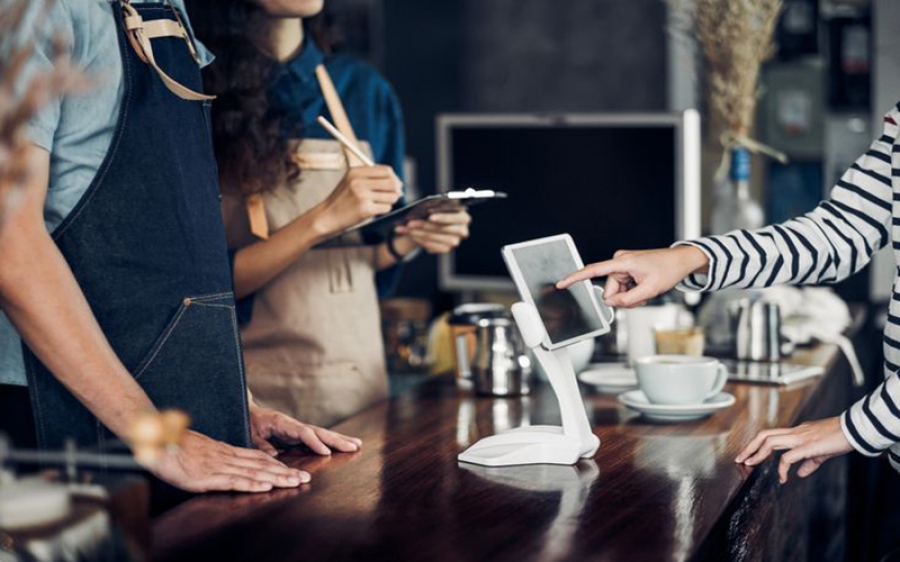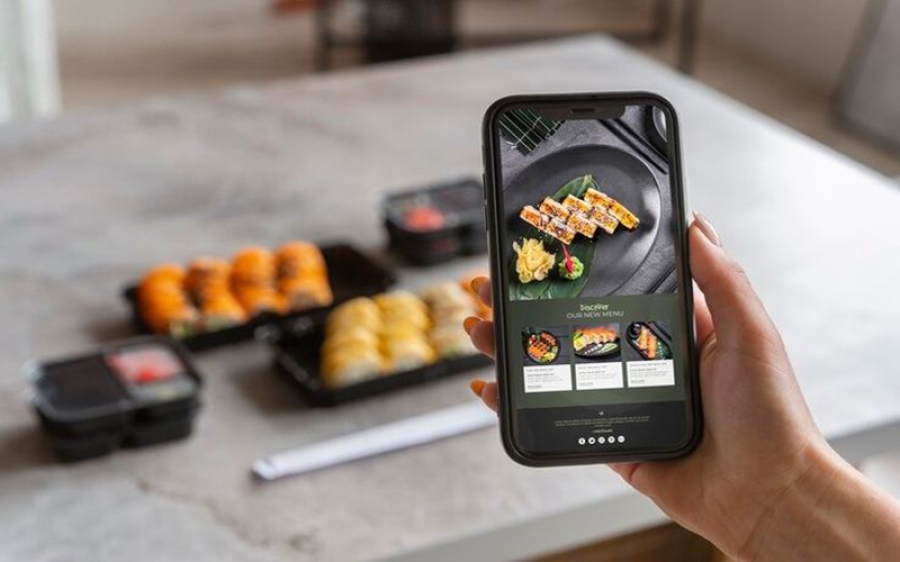Connecting a QR Menu to Social Media and Maximize Revenue
Connecting a QR menu to social media and maximizing revenue is a strategic approach that leverages the power of digital technology to enhance the dining experience and boost sales. This innovative method not only streamlines operations but also opens up new avenues for marketing and customer engagement. This comprehensive guide will explore how to integrate QR codes with social media, the benefits of this integration, and how to maximize revenue through this strategy.
Integrating QR Codes with Social Media
The integration of QR codes with social media platforms is a game-changer for restaurants. By linking QR codes to your social media profiles or hashtags, you can increase your online visibility and engagement, turning every diner into a potential online advocate for your brand This strategy bridges the physical and digital worlds, allowing customers to access your digital content, including menus, special offers, and social media pages, directly from their smartphones
Benefits of Social Media Integration
Increased Brand Awareness: Social media integration with QR codes can significantly increase your brand's visibility online. This visibility can lead to a broader customer base and higher sales
Enhanced Customer Engagement: By linking QR codes to social media, you can engage customers in real-time, offering special deals, event tickets, or limited-time offers. This direct marketing approach can convert casual diners into loyal patrons
Elimination of Printing Costs: Digital menus and social media integration reduce the need for printing physical menus, saving on costs associated with paper, ink, and storage
Expanded Customer Reach: Social media platforms have a vast reach, allowing you to connect with customers beyond your immediate geographic location. This can help expand your customer base and drive sales
Encouragement of Future Visits: By leveraging social media, you can encourage customers to share their dining experiences, which can lead to word-of-mouth marketing and increased future visits
How to Maximize Revenue
Optimize Menu Presentation: Ensure your digital menu is clear, easy to read, and mobile-device friendly. Big fonts, labeled sections, and visually appealing images can enhance the dining experience and encourage more orders
Customize QR Codes: Customize your QR codes to reflect your brand's colors, logo, and style. This not only makes the codes more appealing but also reinforces your brand identity
Test and Educate: Before rolling out your QR code system, test it on multiple devices to ensure it directs to the correct webpage and loads efficiently. Educate your staff on how the system works to assist customers and address any potential issues
Strategic Placement: Place QR codes strategically on tables, menus, and other high-traffic areas to ensure easy access for customers. Consider using tent cards, table stickers, or integrating the QR code into the table design for a discreet and attractive option
Leverage Social Media for Promotions: Use social media to promote your QR code menu, special deals, and events. Encourage customers to share their experiences and tag your restaurant in posts to increase visibility and engagement
Conclusion
By integrating QR codes with social media, restaurants can significantly enhance the dining experience, increase brand awareness, and maximize revenue. This strategic approach not only streamlines operations but also opens up new avenues for marketing and customer engagement. By optimizing your digital menu presentation, customizing QR codes, testing and educating your staff, and leveraging social media for promotions, you can create a more engaging and profitable dining environment. As the restaurant industry continues to evolve, embracing digital technologies like QR codes and social media integration will be crucial for staying competitive and meeting the expectations of modern diners.
Do QR Codes in Restaurants Make the Menu Contactless, But The Service “Hospitality-Less?”
Adopting new technology in the hospitality industry, particularly the transition to QR codes for restaurant menus, is a significant shift that challenges the traditional approach to dining. This innovation has sparked a debate among restaurateurs, who often find it difficult to switch from traditional menus to QR codes due to misconceptions about the impact on service quality and customer experience. The fear is that a contactless menu may not offer the same level of hospitality and personal touch that diners have come to expect from their dining experiences. This blog post aims to explore the implications of QR codes in restaurants, addressing the concerns about the transition to contactless menus and the potential impact on service quality.
The Evolution of Restaurant Menus
Restaurants have long relied on beautifully designed menus to showcase their culinary offerings and create a memorable dining experience. These menus serve as a tangible connection between the restaurant and its customers, offering a sense of exclusivity and personalization. The introduction of QR codes as a digital alternative to traditional menus represents a significant shift in how restaurants present their offerings and interact with their customers.
The Misconceptions Surrounding QR Codes
One of the primary concerns about adopting QR codes for restaurant menus is the belief that a contactless menu may not offer the same level of hospitality and personal touch that diners have come to expect. This misconception stems from the traditional view of hospitality as a service that is inherently personal and intimate, requiring direct human interaction. However, the transition to QR codes does not necessarily mean the end of personalized service; it simply represents a new way of delivering that service.
The Role of Technology in Enhancing Hospitality
The integration of QR codes into restaurant menus is not about replacing personal service but about enhancing it. By leveraging technology, restaurants can offer a more efficient and convenient dining experience for their customers. This includes the ability to access menus digitally, place orders quickly, and receive updates on their orders in real-time. These features can enhance the overall dining experience by reducing wait times, minimizing the risk of food waste, and allowing for a more personalized dining experience.
Maximizing Revenue and Customer Satisfaction
The adoption of QR codes in restaurants can also have a significant impact on revenue and customer satisfaction. By offering a digital menu, restaurants can increase their visibility online, attract a wider customer base, and provide a more engaging dining experience. This can lead to increased sales and customer loyalty. Furthermore, by using QR codes to collect data on customer preferences and ordering habits, restaurants can tailor their offerings to meet the needs and preferences of their customers, leading to higher customer satisfaction.
Addressing Accessibility and Inclusivity
One of the key challenges of adopting QR codes for restaurant menus is ensuring that all customers, regardless of their technological proficiency or physical abilities, can access the menu. Restaurants can address this issue by providing printed copies of the QR code menu for guests who prefer a physical menu or who do not have access to a smartphone. Additionally, restaurants can ensure that their digital menus are accessible to all users, including those with visual or dexterity impairments, by following web accessibility guidelines.
The Future of Restaurant Menus
The transition to QR codes for restaurant menus represents a significant evolution in the hospitality industry. While this shift may challenge traditional notions of hospitality, it also offers new opportunities for restaurants to enhance the dining experience and meet the evolving needs and expectations of their customers. By embracing this technology, restaurants can not only improve operational efficiency and revenue but also ensure that their service remains personalized and engaging.
Conclusion
The adoption of QR codes in restaurants represents a significant shift in how restaurants present their offerings and interact with their customers. While this transition may challenge traditional notions of hospitality, it also offers new opportunities for restaurants to enhance the dining experience and meet the evolving needs and expectations of their customers. By addressing the concerns about the impact of QR codes on service quality and customer experience, restaurants can leverage this technology to create a more engaging and profitable dining environment. As the hospitality industry continues to evolve, embracing new technologies like QR codes will be crucial for staying competitive and meeting the expectations of modern diners.
Best Digital Menu Solutions For Restaurants
The adoption of digital menus in restaurants has become a pivotal step in enhancing the dining experience and optimizing operations. Digital menus offer a range of benefits, including flexibility, improved efficiency, enhanced customer experience, increased revenue, and valuable data insights. This comprehensive guide will explore the best digital menu solutions for restaurants, focusing on features, benefits, and how to implement them effectively.
Features and Benefits of Digital Menus
Flexibility and Customization: Digital menus can be updated instantly, allowing restaurants to change prices in real-time based on inventory costs. They can also automatically show customers which dishes are sold out, ensuring a seamless dining experience
Improved Efficiency and Accuracy: By eliminating the need for paper menus, digital menus reduce printing costs and improve order accuracy. Customers input their orders directly, minimizing the risk of miscommunication
Better Customer Experience: Digital menus free up staff from repetitive tasks, enabling them to focus on providing hospitality. This can lead to a more engaging and personalized dining experience
Increased Revenue and Profitability: Digital menus can speed up table turnover and encourage customers to order more, leading to higher sales and profitability. The right design can also enhance the dining experience, encouraging more orders
Enhanced Data Collection and Analysis: Digital menu software provides valuable data on customer orders, payment methods, and preferences, aiding in making informed business decisions
How to Implement a Digital Menu
Objective Setting: Clearly define your goals for implementing digital menus, such as increasing sales, reducing wait times, or enhancing brand awareness
Content Strategy: Develop a content strategy that includes menu items, promotional offers, and interactive elements. Consider the customer journey and how digital signage can enhance their experience
Compatibility: Ensure that the hardware you choose is fully compatible with your digital menu board software. Opt for manufacturers that supply their own hardware and integrated software, including display screens and media players
Quality and Reliability: Invest in high-quality, durable hardware designed for restaurant environments, with features like high brightness levels and robust construction for longevity
Best Digital Menu Solutions
When selecting digital menu board software, consider the following essential features:
Importance: Look for software that allows for quick and easy adaptation of menu displays to fit your brand identity and seasonal promotions.
What to Look For: High-quality, professionally designed templates that can be easily modified without needing extensive design skills. An upload media library and drag-and-drop interfaces simplify the process
Automatic Updating: Intuitive scheduling tools that allow for detailed planning of content changes, including day parting features to cater to breakfast, lunch, and dinner menus or special event promotions
Conclusion
Digital menus represent a significant advancement in the restaurant industry, offering a range of benefits from enhanced customer experience to increased operational efficiency. By understanding the features and benefits of digital menus, and following a structured approach to implementation, restaurants can leverage this technology to create a more engaging and profitable dining environment. As the hospitality industry continues to evolve, embracing digital technologies like digital menus will be crucial for staying competitive and meeting the expectations of modern diners.








